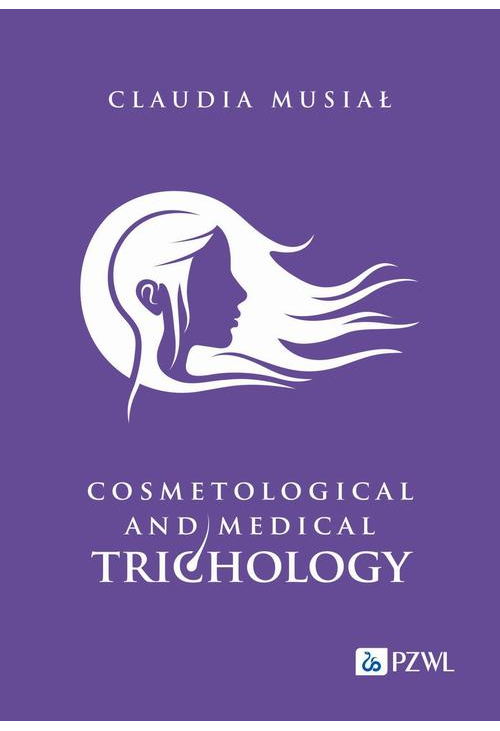
- -11%
ebook Cosmetological and medical trichology
Odkryj fascynujący świat trichologii kosmetycznej i medycznej dzięki książce Cosmetological and medical trichology autorstwa wybitnej specjalistki, dr Claudii Musiał. Ta publikacja wydana przez PZWL w 2025 roku otworzy przed Tobą drzwi do zrozumienia skomplikowanych zagadnień związanych ze zdrowiem włosów i skóry głowy.
Język polski, w którym dostępny jest ten ebook, sprawia, że staje się on nieocenionym źródłem wiedzy dla studentów oraz praktyków z różnych dziedzin medycyny i kosmetologii.
Dr Claudia Musiał, międzynarodowy ekspert w dziedzinie trichologii i kosmetologii, przedstawia w swojej książce pełne spektrum trichopatologii, co pozwala lepiej zrozumieć obraz kliniczny pacjenta.
Książka zawiera kompleksowe informacje na temat anatomii i fizjologii skóry głowy oraz włosów, klasyfikacji chorób skóry owłosionej, które ułatwiają interpretację danych klinicznych pacjentów. Obejmuje również takie zagadnienia jak:
- patogeneza i leczenie medyczne w przypadku różnych dermatoz
- diagnostyka laboratoryjna
- cechy histologiczne z opisem klinicznym
- cechy trichoskopowe
- klasyfikacja typów włosów i rodzajów uszkodzeń włosów
- podstawy endokrynologii
- zagadnienia związane z żywieniem
Dodatkowo, jednym z ważnych elementów książki jest rozdział poświęcony organizacji pracy w gabinecie trichologicznym, który pomaga zrozumieć patofizjologię i obraz kliniczny chorób skóry głowy oraz dostępne metody leczenia medycznego i chirurgicznego.
Chociaż książka jest skierowana do studentów, jej kompleksowe ujęcie tematu oraz przydatne wskazówki na pewno okażą się cenne również dla praktyków zajmujących się trichologią, dermatologami czy kosmetologami leczącymi pacjentów z nadmiernym wypadaniem włosów.
Jeśli jesteś zainteresowany najnowszymi trendami i rozwiązaniami w dziedzinie trichologii, ten ebook jest idealnym wyborem dla Ciebie. Kup e-booka Cosmetological and medical trichology i pobierz go w formatach PDF lub innych dostępnych wydaniach elektronicznych.
Odwiedź nasz sklep z ebookami, aby odkryć pełną ofertę książek elektronicznych i znaleźć najlepsze bestsellery wśród ebooków. Czytaj, ucz się i rozwijaj swoją pasję do literatury pięknej oraz nauki w wygodny sposób, dzięki możliwościom, jakie oferuje publikacja cyfrowa.
Spis treści ebooka Cosmetological and medical trichology
1. Anatomy and physiology of skin and hair 11.1. Structure and functions of the skin 1
1.1.1. Epidermis 2
1.1.2. Basal cell layer (stratum basale) 4
1.1.3. Layer of spiny cells (stratum spinosum) 4
1.1.4. Granular cell layer (stratum granulosum) 5
1.1.5. Light layer of the epidermis (stratum lucidum) 6
1.1.6. Corner cell layer (stratum corneum) 6
1.1.7. Dermis (corium, dermis) 6
1.1.8. Reticular layer (stratum reticulare) 6
1.1.9. Subpapillary layer (stratum subpapillare) 7
1.1.10. Papillary layer (stratum papillare) 7
1.1.11. Skin appendages (adnexa cutis) 7
1.1.12. Subcutaneous tissue (tela subcutanea, subcutis) 8
1.2. Hair structure and physiology 8
1.2.1. Hair follicle stem cells 10
1.2.2. Hair pigmentation 11
1.2.3. Oxidative stress 12
1.3. Hair follicle embryology 14
1.4. Hair biochemistry 16
1.4.1. Amino acids 16
1.4.2. pH of the scalp and hair 19
1.5. Hair growth cycle 19
1.5.1. Anagen 19
1.5.2. Catagen 20
1.5.3. Telogen 21
1.5.4. Exogenous 21
1.5.5. Kenogen 21
1.6. Types of hair and their properties 22
1.6.1. Classification according to hair type 22
1.6.2. Classification according to hair type 22
1.6.3. Andre Walker’s classification 22
1.6.4. Classification according to the structure of the hair 24
1.6.5. Classification by ethnicity 24
1.7. Hair shaft – defects of hair shaft 24
1.7.1. Hair shaft anomalies 25
1.8. Changes in the character of the hair – chemical, mechanical and thermal damage 27
1.8.1. Chemical damage 27
1.8.2. Damage to the hair shaft 28
1.8.3. Dystrophic hair 29
2. Excessive hair loss 31
2.1. Factors affecting excessive loss hair 31
2.1.1. The role of glycosaminoglycans 32
2.1.2. Excessive hair loss at women 33
2.1.3. Air pollution – its role in excessive hair loss 34
2.2. Factors affecting hair growth 35
3. Types of balding 37
3.1. Alopecia areata 37
3.2. Androgenic alopecia in men 40
3.3. Androgenic alopecia in women 42
3.4. Menopausal androgenic alopecia in women 46
3.5. Telogen general alopecia 47
3.6. Anagen alopecia 48
3.7. Scaring alopecia 49
3.8. Drug-based alopecia 50
3.9. Systemic-related alopecia oncological therapy 51
3.10. Trichotillomania 53
4. Dermatological diseases of the scalp 55
4.1. Mycosis of the scalp 57
4.2. Atopic dermatitis of the scalp 59
4.3. Seborrhea 61
4.4. Seborrhous skinititis of the scalp 63
4.5. Psoriasis of the scalp 65
4.6. Dandruff – white, varied, pink 66
4.7. Allergic changes in hair scalp 68
4.8. Pediculosis/Lice 69
4.9. Demodecosis 70
4.10. Inflammation of follicle 71
4.10.1. Malassezia folliculiti 71
4.10.2. Bacterial folliculitis 71
4.10.3. Folliculitis decalvans 73
5. Diagnostic methods in trichology 75
5.1. Trichological patient in laboratory diagnostics 75
5.2. Basic trichological diagnostic methods 78
5.2.1. Physical examination 79
5.2.2. Pull test 79
5.2.3. Washing test 79
5.2.4. Hair weighing method 79
5.3. Trichological patient imagie diagnostics 80
5.3.1. Trichoscopy 80
5.3.2. Trichogram 82
5.3.3. Phototrichogram 82
5.3.4. Scalp biopsy 83
5.3.5. Wood’s lamp 83
5.4. Imaging methods of hairy skin head and hair 84
5.4.1. Light microscopy 84
5.4.2. Polarized light microscopy 84
5.4.3. Confocal microscopy 84
5.4.4. Electron microscopy 84
5.5. Apparatus for physicotherapy in trichology 85
5.5.1. Darsonvalization 85
5.5.2. Electrostimulation 85
5.5.3. Ultrasounds 85
5.5.4. Cryomassage 86
5.6. Elemental analysis of hair 86
6. Scalp care in the trichological practice 87
6.1. Scalp cleansing treatment 87
6.2. Cavitation peeling of the scalp 88
6.3. Scalp darsonvalization treatment 89
6.4. Scalp ionophooresis 90
6.5. Carboxytherapy of the scalp 90
6.6. Needle mesotherapy of the scalp 91
6.6.1. Needle mesotherapy 91
6.6.2. Needle mesotherapy of the scalp 94
6.7. Microneedle mesotherapy of the scalp 97
6.8. Needle mesotherapy of the skin heads using plasma platerich 99
6.8.1. Platelet-rich plasma 99
6.8.2. Platelet-rich plasma in the treatment of baldness 101
6.8.3. Platelet-rich fibrin 102
6.9. Stem cells in balding therapy 103
6.9.1. Hair follicle stem cells 103
6.9.2. Micrografts 105
6.9.3. Autologous CD34+ stem cells and concentrated growth factors 106
6.10. LED therapy 107
6.11. Laser therapy 109
6.11.1. LLLT technology 110
6.11.2. Fractional laser 111
6.11.3. Excimer laser 113
6.12. Oxygen infusion 113
6.13. Scalp massage 114
6.14. Botulinum toxin in baldness treatment – a new potential therapeutic option 115
7. Hair care 117
7.1. Rules of correct hair care 117
7.1.1. Shampoos 117
7.1.2. Hair conditioners 120
7.2. Chemical hair treatments 122
7.2.1. Hair coloring preparations 122
7.2.2. Hair lightening agents 122
7.2.3. Chemical hair straightening 123
7.2.4. Permanent wave 123
7.3. Effects of improper hair care 124
7.4. Penetration/transport routes of trichological preparations 124
7.4.1. Stages of penetration of active ingredients 126
7.4.2. The influence of the preparation’s formulation on the absorption of the active substance 126
7.4.3. Nanotechnology in the transport of active ingredients 127
7.4.4. Techniques for transporting active ingredients 129
7.4.5. Permeation promoters 129
8. Ingredients of trichological preparations 131
8.1. List of ingredients used in trichological preparations along with description 131
8.1.1. Antioxidants, vitamins and macroelements 131
8.1.2. Plant extracts 133
8.1.3. Oils and essential oils 136
8.1.4. The most frequently used active ingredients 140
8.1.5. Complexes of active ingredients 142
8.1.6. Plant stem cells and cell activating ingredients hair follicle stem 146
9. Non-surgical completion hair methods 149
9.1. Scalp micropigmentation – characteristics, treatment techniques 149
9.2. Hair loss retouch 150
10. Hair transplantation 151
10.1. Qualification of a trichological patient for hair transplant 151
10.2. Overview of hair transplantation methods 152
10.2.1. FUE (follicular unit excision) hair transplant method 153
10.2.2. Suturing technique (trichophytic closure, TC) 154
10.2.3. Platelet-rich plasma (PRP) 154
10.2.4. DHI (direct hair implantation) hair transplant method 154
10.2.5. SAFER system (suction assisted follicular extraction and reimplantation) 154
10.2.6. Biofibre synthetic graft 155
10.3. Indications and contraindications for hair transplant 155
10.4. Post-procedure recommendations 156
11. Pharmacology in trichology 157
11.1. Groups of medications for women, contraindications, interactions 157
11.1.1. Female pattern androgenetic alopecia 157
11.2. Groups of medications for men, contraindications, interactions 160
11.2.1. Androgenetic alopecia male pattern 160
11.2.2. Alopecia areata in women and men 161
12. Basics endocrinology 163
12.1. Function of the hormonal system and its effect on excessive hair loss 163
12.1.1. Hypothyroidism 164
12.1.2. Hyperthyroidism 165
12.1.3. Hashimoto’s thyroiditis 165
12.1.4. Graves’ disease 165
12.1.5. Excessive hair 166
12.1.6. Sex hormones 167
13. Trichological dietetics 169
13.1. Diet and supplementation 169
13.1.1. Vitamins 169
13.1.2. Proteins, fats and carbohydrates 178
13.1.3. Micro- and macroelements – main elements, trace elements 184
13.2. Intestinal microbiome and impact on the condition of the scalp 191
13.2.1. The relationship between telogen effluvium and the microbiome intestinal 193
13.2.2. The relationship between androgenic alopecia and the microbiome intestinal 193
13.2.3. The relationship between alopecia areata and the microbiome intestinal 193
13.2.4. The relationship between alopecia areata and hypothyroidism thyroid and intestinal microbiome 194
13.2.5. Restoration of immune privilege 194
13.2.6. Anti-inflammatory diet 195
13.2.7. Alopecia due to malnutrition 197
14. Organization of work in the trichological office 199
14.1. Procedures in the trichological office 199
14.1.1. Organization of a trichology office 199
14.1.2. Patient diagnostics 200
14.2. Hazards in the trichology office 202
14.3. Interview with a trichological patient 203
Literature 205
Index 217
Szczegóły ebooka Cosmetological and medical trichology
- Wydawca:
- PZWL
- Rok wydania:
- 2025
- Typ publikacji:
- Ebook
- Język:
- polski
- Format:
- epub mobi
- Liczba stron:
- 240
- Miejsce wydania:
- Warszawa
- ISBN dla wersji papierowej:
- 9788301240547
Recenzje ebooka Cosmetological and medical trichology
-
Reviews (0)

Na jakich urządzeniach mogę czytać ebooki?
- -11%





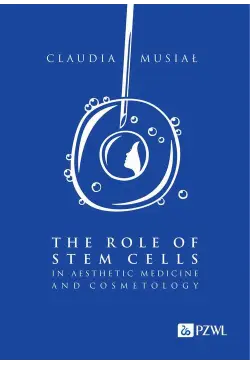
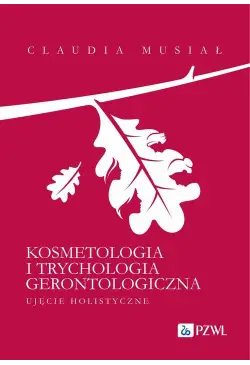
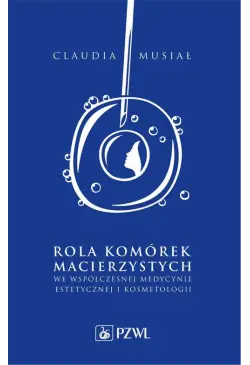
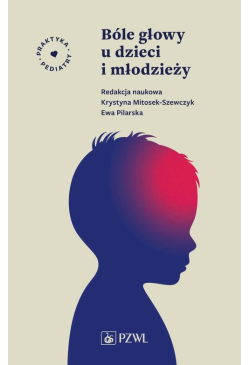

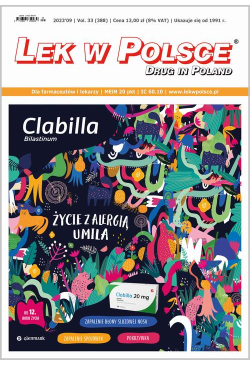


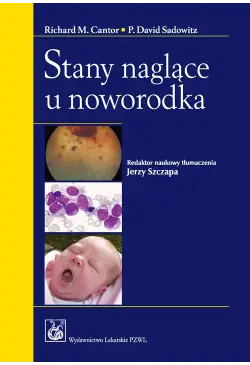

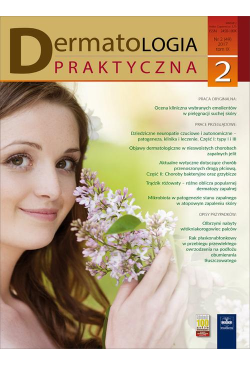



@CUSTOMER_NAME@
@COMMENT_TITLE@
@COMMENT_COMMENT@